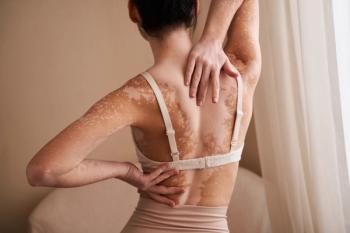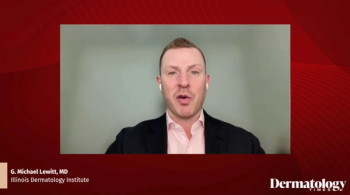
Study: Maintaining Repigmentation in Vitiligo
A study in the Journal of the American Academy of Dermatology investigated the maintenance of results of ruxolitinib cream in patients with vitiligo.
A study (NCT03099304) examined treatment with ruxolitinib (Opzelura; Incyte) cream, a Janus kinase (JAK)1/JAK2 inhibitor, in adult patients with vitiligo. In the phase 2 dose-ranging study, it was found ruxolitinib resulted in substantial repigmentation over 52 weeks.1
Researchers then assessed maintenance of repigmentation among responders from the trial following ruxolitinib discontinuation after 104 weeks of treatment, according to the article. Patients included into the continued monitoring were those initially randomized to ruxolitinib cream (1.5% twice daily [BID], 1.5% once daily [QD], 0.5% QD, or 0.15% QD) demonstrating facial repigmentation at Week 24 who completed 1 or more follow-up visits at 1, 3, or 6 months after an additional 52 weeks of 1.5% ruxolitinib cream BID monotherapy (Weeks 52-104).
The loss of repigmentation was defined as an increase in Vitiligo Area Severity Index score during the last follow-up visit vs week 104 on ruxolitinib cream. There were 16 patients who were included in the analysis: 3 of which received 1.5% treatment BID; 5 received 1.5% treatment QD; 3 received 0.5% treatment QD; and 5 received 0.15% treatment QD (including 2 patients re-randomized to 1.5% BID/0.5% QD after Week 24).
There were 4 patients (25.0%; 1.5% QD n = 1; 0.5% QD, n = 1; 0.15% QD, n = 2) who had repigmentation loss over the 1 to 6 months of follow-up, none of which were from the 1.5% ruxolitinib BID treatment group.
“There were no significant differences in baseline serum levels of chemokine (C-X-C motif) ligand (CXCL) 9, CXCL10, or interleukin (IL)-15 in patients who experienced loss [vs] maintenance of repigmentation after ruxolitinib cream discontinuation,” wrote the authors.
This suggests that repigmentation with ruxolitinib cream monotherapy may be maintained after discontinuation, they wrote, but a larger follow-up study is needed to confirm these findings.
Reference:
1. Rosmarin D, Pandya AG, Grimes P, et al. 27568 Maintenance of repigmentation after discontinuation of ruxolitinib cream in patients with vitiligo. Journal of the American Academy of Dermatology. 2021;85(3):AB36. doi:10.1016/j.jaad.2021.06.169
Newsletter
Like what you’re reading? Subscribe to Dermatology Times for weekly updates on therapies, innovations, and real-world practice tips.


















